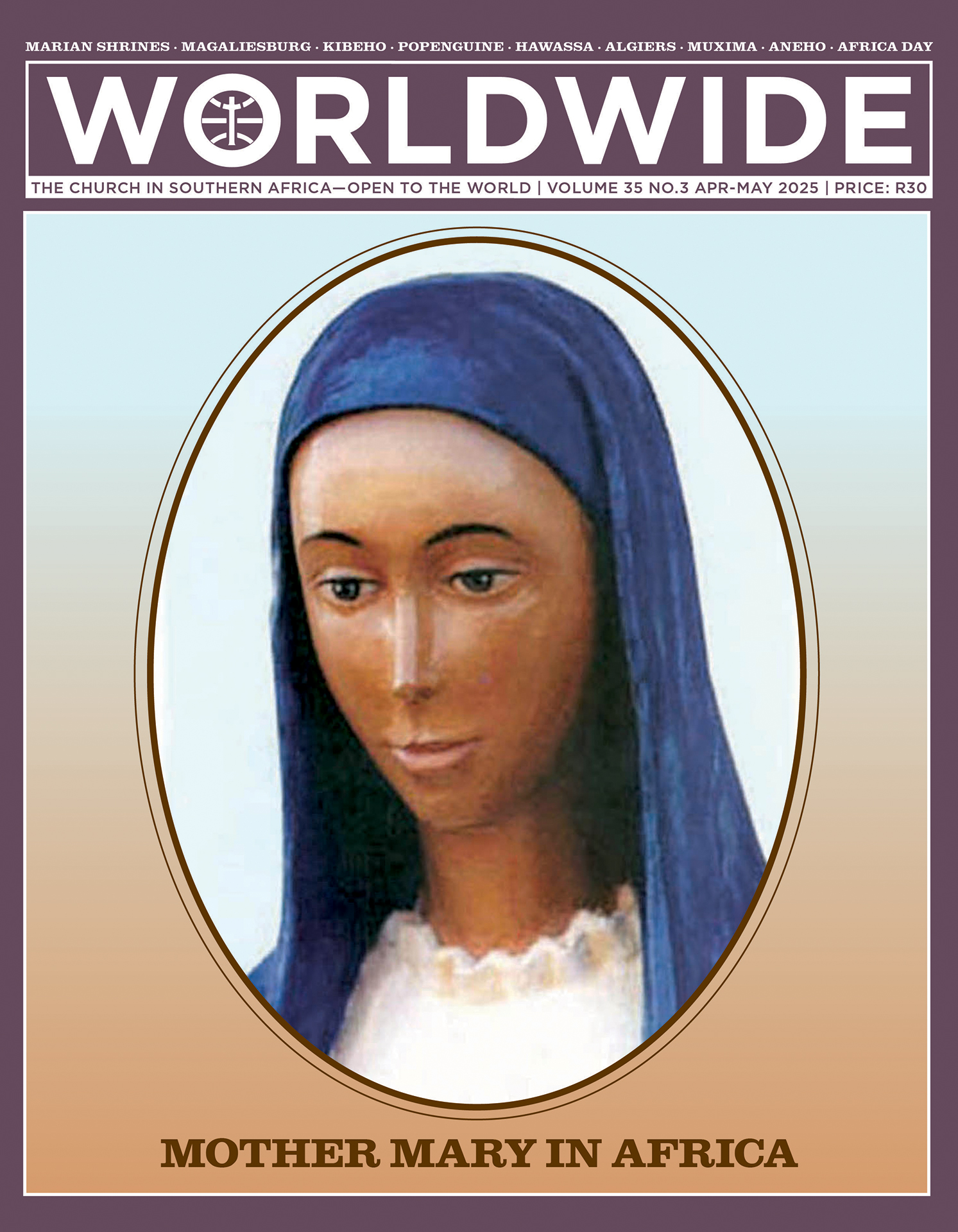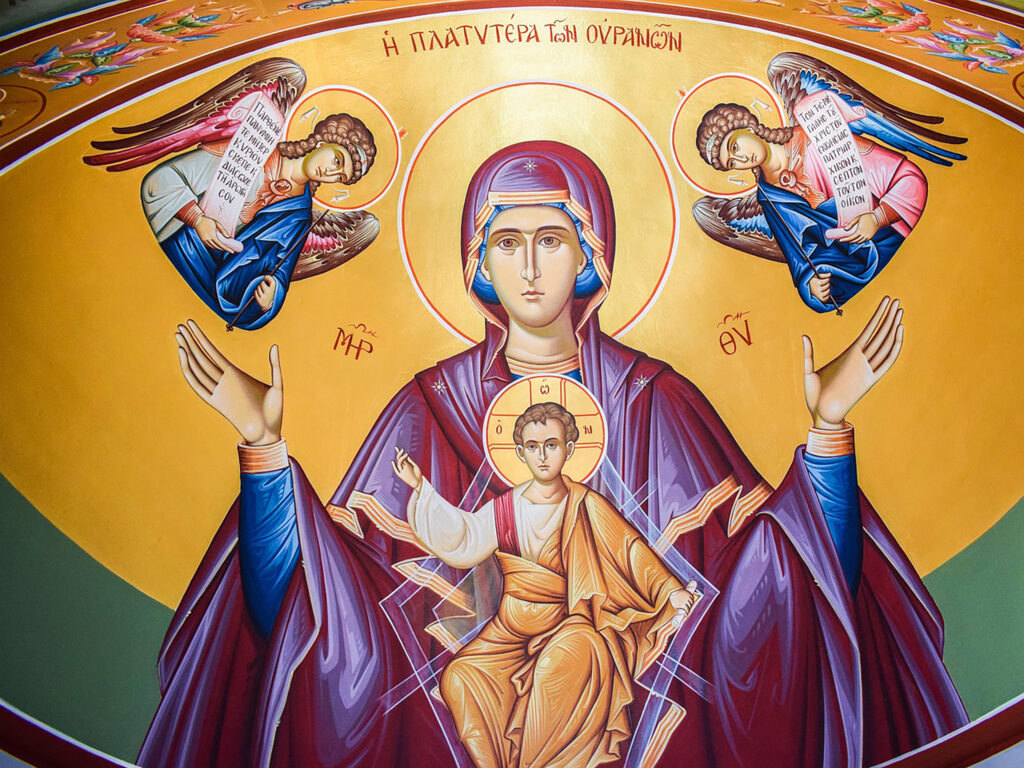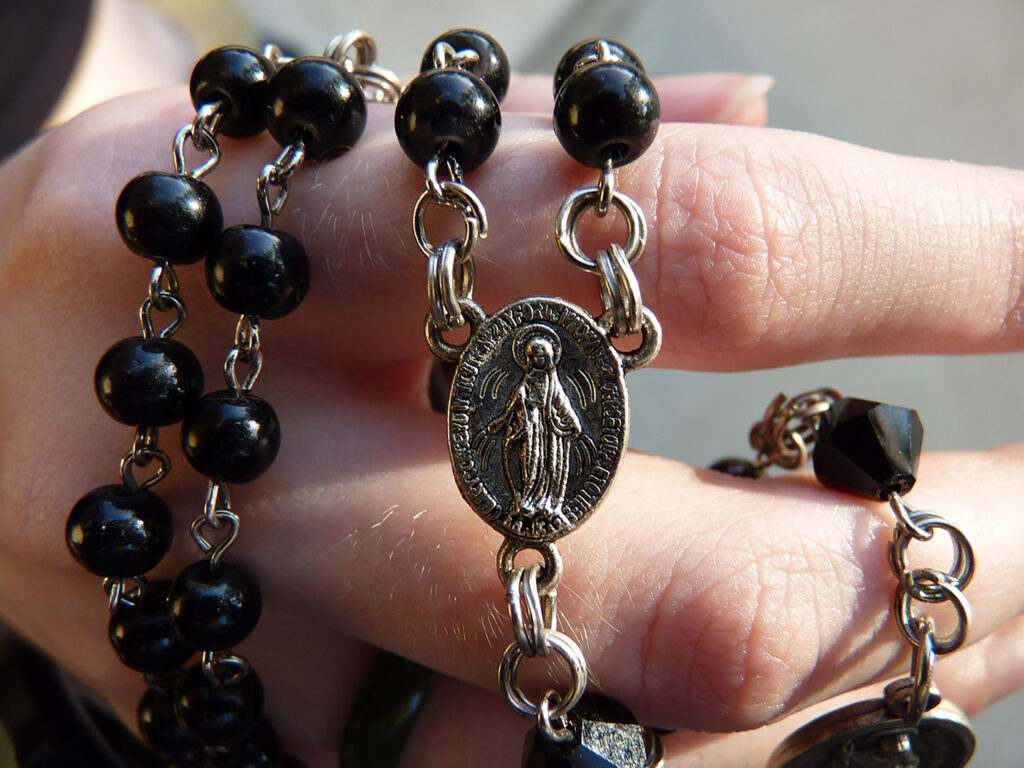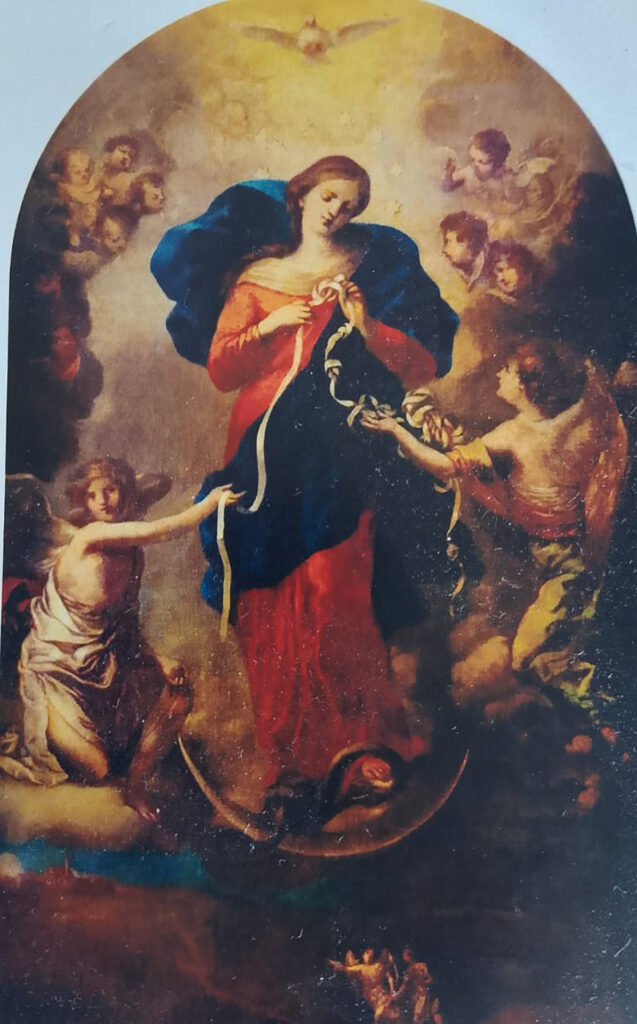
MOTHER MARY IN AFRICA
Head of the Statue of Mother Mary at Kibeho, Rwanda, carved by Marek Kowalski and based on the models of Jean Pierre Sibomana and Faustin Kayitana. In the statue, Mother Mary holds the Seven Sorrows Chaplet, a Marian devotion reintroduced to the Catholic community by Our Lady of Kibeho.
Kibeho is the only Marian apparition on African soil, officially recognized by the Church. Mother Mary’s requests for prayers preluded the 1994 Genocide.
YOUTH VOICES • VENERATION TO MARY

HONOURING OUR MOTHER
Africa Day is celebrated on May 25th. The author focuses on the reality of thousands of refugee women who, fleeing from various conflicts or having been victims of trafficking, courageously strive to find a home in South Africa. The Church responds actively to their need for integration into society.
BY KATI DIJANE | CATHOLIC JOURNALIST
AMONG ROMAN Catholic and Orthodox churches, Mary, the mother of Jesus, is venerated as Mother of God or Theotokos, this title being one of many of the esteemed names given to her over the centuries. The veneration of Mary entails various forms of devotion, such as praying the rosary, pious acts, visual arts, poetry and music devoted to her. (Wikipedia, n.d.) These are all ways of placing Our Lady in the honoured position which God Himself chose for her.
Mary was conceived without sin, according to the doctrine of the Immaculate Conception, declared by Pope Pious IX in 1854 (Franciscan Foundation for the Holy Land, 2023). She has an intimate bond with Jesus—one that no other human in all of creation can or will ever be able to experience. She was given the privilege of hosting eternity in her womb: the fullness of the Godhead and Source of all creation, considering that Jesus is God and that He is one of the three Persons of the Holy Trinity together with the Father and the Holy Spirit.
Origins of Marian veneration
The exact origins of Marian veneration are unknown, but some believe that it started with Mary’s cousin, Elizabeth:
“In a loud voice, [Elizabeth] exclaimed: ‘Blessed are you among women, and blessed is the child you will bear! But why am I so favoured, that the mother of my Lord should come to me? Blessed is she who has believed that the Lord would fulfil his promises to her!’” (Luke 1:42–45).
Upon seeing Mary, Elizabeth was filled with knowledge revealed by the Holy Spirit. Hence, she honoured Mary as a most valuable, holy vessel, considered to be worthy of hosting God within her. Following this greeting by Elizabeth, Mary responded with what is known as the Magnificat:
“My soul glorifies the Lord and my spirit rejoices in God my Savior, for He has been mindful of the humble state of His servant. From now on all generations will call me blessed, for the Mighty One has done great things for me—holy is His name” (Luke 1:46–49).
After she was venerated, Mary immediately gave praise to God, directing the glory to the Source and recognising that He alone is Lord. Elizabeth gave Mary hyperdulia (in the Greek language), a special form of veneration; more honour (dulia) than the saints, though she was not honoured and worshipped as a deity (latria) (Wikipedia, n.d.).
Contemplation
Motherhood (and in effect, fatherhood) is a very sacred relationship. Even in the animal kingdom, one sees beautiful displays of care and love between parents and their offspring. Biologists and scientists have spent decades studying and attempting to understand animal behaviour, and the rhythms and ways in which these creatures treat their young. The observation of animal behaviour helps us to understand their role in the greater scheme of the ecosystem.
Every bit of Scripture that refers to Mary, points to the Saviour she birthed and the plan and purpose He was birthed for.
The contemplation of statues, paintings and murals of Our Lady (and occasionally of St Joseph) at places of devotion are commonplace. Initially, it may seem like people worshipping images, while it is in fact quite the opposite. These visual aids help the pilgrim ‘study’ and understand signs and symbols—which Our Lady portrays—woven into the story of Jesus’ life, death and resurrection.


Spending time reciting the rosary and even singing or writing songs about Mary is actually very similar to the work done by those scientists and biologists; one positions oneself daily to be changed by what one observes in Mary, in her story and the pattern of her life. Every bit of Scripture that refers to her, points to the Saviour she birthed and the plan and purpose He was birthed for.
The new Ark of the Covenant
Like Jesus, Mary is referred to throughout the Old Testament. The Israelites were instructed by God to make an Ark of the Covenant—a holy box fitted with a ‘mercy seat’ (the seat of Atonement). The Ark contained the stone tablets upon which God wrote the Ten Commandments; the rod that Aaron used (which had miraculously budded), as well as manna (a powdery substance from which bread was made) given by God to the Israelites for their journey to the Promised Land (Hebrews 9:4).
This Covenant Box was seen as so holy, that when someone who was not a purified priest tried to touch it, they died (2 Samuel 6:1–7). The workmen were also specially chosen by God and given a special anointing to carry out this work, as described in Exodus 35:30–35, 36:2.

Similarly, Mary is like the Ark of the Covenant: her womb being the vessel of God within her. According to tradition, her parents conceived her without sin, making her holy, or ‘full of grace.’ She, in turn, conceived Jesus by the Holy Spirit, making Jesus holy. Jesus is the Bread of Life according to John 6:35 (likened to manna), the Branch, according to Isaiah 4:2 (likened to the rod), and the fulfilment of all the laws and the prophets, according to Matthew 5:17 (the Ten Commandments).
Mary has also been called the Seat of Wisdom since the 11th Century (Kathleen, 2022), as she held Jesus on her lap and nursed him who is the “wisdom of God” (1 Corinthians 1:24).
A mother close to us
All of this having been said, one could consider Mary as being too holy to be associated with; however, when a woman blessed Mary for being the mother of Jesus (Luke 11:27–28), the Lord stated that everyone who does the work of God is to be considered blessed. He invites us to regard the obedience of Our Lady as something we can aspire to.
In 2020, when the COVID-19 pandemic changed our lives in so many ways, I was doing my Master’s degree and I had just moved into my postgraduate residence, when lockdown was announced in South Africa. As the year progressed, I sometimes felt lonely and realised that my body and mind were reacting to the combined stress from academics, society and the pandemic. I constantly felt tense, short of breath and very anxious.

One day I scrolled the internet, and came across the Novena to Mary, Undoer of Knots. I realised that I could ask Our Lady to untie the knots of tension, anxiety and fear in my body and mind, to help me get through this period. The act of surrendering the ball of tension to Our Lady was an immediate load off of my shoulders.
While it would have been amazing to be able to ascend a mountain, or visit a sacred shrine and make my petitions there, it was physically not possible. By God’s grace, all I needed was to surrender to Jesus, and hand His Mother the knots of my worries, as He embraced me in my time of need.
All I needed was to surrender to Jesus, and hand His Mother the knots of my worries, as He embraced me in my time of need.

